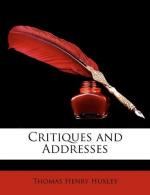[Footnote 1: Res Gestae, xxvii.]
“Galliarum hoc inventum
rutilandis capillis ... apud Germanos
majore in usu viris quam foeminis."[1]
[Footnote 1: Historia Naturalis, xxviii. 51.]
Here we have a writer who flourished only a short time after the date of the Caligula story, telling us that the Gauls invented soap for the purpose of doing that which, according to Suetonius, Caligula forced them to do. And, further, the combined and independent testimony of Pliny and Ammianus assures us that the Germans were as much in the habit of reddening their hair as the Gauls. As to De Belloguet’s supposition that, even in Caligula’s time, the Gauls had become darker than their ancestors were, it is directly contradicted by Ammianus Marcellinus, who knew the Gauls well. “Celsioris staturae et candidi poene Galli sunt onions, et rutili, luminumque torvitate terribiles,” is his description; and it would fit the Gauls who sacked Rome.
III. In none of the invasions of Britain which have taken place since the Roman dominion, has any other type of man been introduced than one or other of the two which existed during that dominion.
The North Germans, who effected what is commonly called the Saxon conquest of Britain, were, most assuredly, a fair, yellow, or red-haired, blue eyed, long-skulled people. So were the Danes and the Norsemen who followed them; though it is very possible that the active slave trade which went on, and the intercourse with Ireland, may have introduced a certain admixture of the dark stock into both Denmark and Norway. The Norman conquest brought in new ethnological elements, the precise value of which cannot be estimated with exactness; but as to their quality, there can be no question, inasmuch as even the wide area from which William drew his followers could yield him nothing but the fair and the dark types of men, already present in Britain. But whether the Norman settlers, on the whole, strengthened the fair or the dark element, is a problem, the elements of the solution of which are not attainable.
I am unable to discover any grounds for believing that a Lapp element has ever entered into the population of these islands. So far as the physical evidence goes, it is perfectly consistent with the hypothesis that the only constituent stocks of that population, now, or at any other period about which we have evidence, are the dark whites, whom I have proposed to call “Melanochroi” and the fair whites, or “Xanthochroi.”
IV. The Xanthochroi and the Melanochroi of Britain are, speaking broadly, distributed, at present, as they were in the time of Tacitus; and their representatives on the continent of Europe have the same general distribution as at the earliest period of which we have any record.




